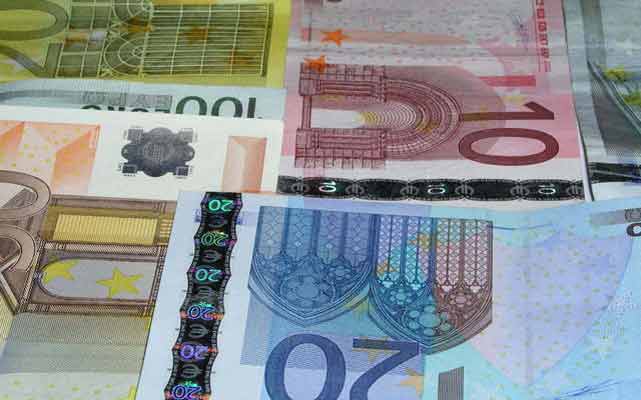British Pound to Euro Forecast: Sterling Recovers Inflation Hit, GBP/EUR Regains 1.15
- Written by
Frank Davies

The Pound to Euro exchange rate (GBP/EUR) fell below 1.1500 after softer UK inflation data revived speculation of another Bank of England rate cut this year. Sterling weakened to 1.1485 as investors reassessed monetary policy expectations
Lower than expected inflation triggered fresh speculation that the Bank of England could cut interest rates again this year and the Pound was subjected to significant selling.
The Pound to Euro exchange rate (GBP/EUR) dipped to 1.1485 from 1.1525 with no major Euro developments on the day.
ING maintains a year-end GBP/EUR target of 1.1360 while Danske Bank has a 12-month forecast of 1.1240.
With markets now increasingly pricing in earlier Bank of England rate cuts and analysts projecting further Sterling softness into year-end, those with upcoming currency purchases or overseas transfers may want to act before volatility returns. You can review live market quotes and compare provider offers to stay ahead of the next GBP/EUR move.
The UK headline inflation rate held at 3.8% for September compared with consensus forecasts of an increase to 4.0% while the core rate edged lower to 3.5% from 3.6% and compared with expectations of an increase to 3.7%.
There was upward pressure on transport prices which was offset by downward pressure from recreation and culture, together with non-alcoholic drinks.
Significantly, food prices declined on the month with the annual increase slowing to 4.5% from 5.1%, the first decline in the annual rate since March.
According to the ONS, the goods inflation rate edged higher to 2.9% from 2.8% while the services-sector rate was unchanged at 4.7%.
It is slightly surprising that this breakdown fed through to a lower overall core rate.
Investment banks are more confident that inflation is near or at a peak which will feed through into Bank of England policy expectations.
ING commented; “Our call is that this 3.8% marks the peak for headline inflation, and we expect it to be 3.5% for the remaining three months of the year, before falling back from January.”
The bank added; “All this should not be enough to bring a November rate cut back on the table, but it definitely increases the chances of a December move.”
Rob Wood, chief UK economist at Pantheon Macroeconomics, noted that there some erratic factors, but added; “We’ll chew over the data in detail today, but our initial reaction is that we will likely bring forward our rate cut call from February to December.”
A cut by February is now fully priced in compared with March previously.
Markets are still not expecting a November cut, although there is certain that there will be some votes for a cut and a dovish set of economic forecasts in the Monetary Policy Report could be enough to trigger a majority in favour of a move.
Danske Bank is still backing a cut next month; “While we continue to expect the BoE to deliver the next cut in the Bank Rate in November, we acknowledge that this hinges on further disinflationary process.”
It added; “We expect the Bank Rate to end 2026 at 3.50%. We see relative rates as a slight positive for EUR/GBP.”
STORY LINK British Pound to Euro Forecast: Sterling Recovers Inflation Hit, GBP/EUR Regains 1.15

The Pound to Euro exchange rate (GBP/EUR) fell below 1.1500 after softer UK inflation data revived speculation of another Bank of England rate cut this year. Sterling weakened to 1.1485 as investors reassessed monetary policy expectations
GBP/EUR Forecasts: 1.1500 Regained
Lower than expected inflation triggered fresh speculation that the Bank of England could cut interest rates again this year and the Pound was subjected to significant selling.
The Pound to Euro exchange rate (GBP/EUR) dipped to 1.1485 from 1.1525 with no major Euro developments on the day.
ING maintains a year-end GBP/EUR target of 1.1360 while Danske Bank has a 12-month forecast of 1.1240.
With markets now increasingly pricing in earlier Bank of England rate cuts and analysts projecting further Sterling softness into year-end, those with upcoming currency purchases or overseas transfers may want to act before volatility returns. You can review live market quotes and compare provider offers to stay ahead of the next GBP/EUR move.
The UK headline inflation rate held at 3.8% for September compared with consensus forecasts of an increase to 4.0% while the core rate edged lower to 3.5% from 3.6% and compared with expectations of an increase to 3.7%.
Save on Your GBP/EUR Transfer
Get better rates and lower fees on your next international money transfer. Compare TorFX with top UK banks in seconds and see how much you could save.
Significantly, food prices declined on the month with the annual increase slowing to 4.5% from 5.1%, the first decline in the annual rate since March.
According to the ONS, the goods inflation rate edged higher to 2.9% from 2.8% while the services-sector rate was unchanged at 4.7%.
It is slightly surprising that this breakdown fed through to a lower overall core rate.
Investment banks are more confident that inflation is near or at a peak which will feed through into Bank of England policy expectations.
ING commented; “Our call is that this 3.8% marks the peak for headline inflation, and we expect it to be 3.5% for the remaining three months of the year, before falling back from January.”
The bank added; “All this should not be enough to bring a November rate cut back on the table, but it definitely increases the chances of a December move.”
Rob Wood, chief UK economist at Pantheon Macroeconomics, noted that there some erratic factors, but added; “We’ll chew over the data in detail today, but our initial reaction is that we will likely bring forward our rate cut call from February to December.”
A cut by February is now fully priced in compared with March previously.
Markets are still not expecting a November cut, although there is certain that there will be some votes for a cut and a dovish set of economic forecasts in the Monetary Policy Report could be enough to trigger a majority in favour of a move.
Danske Bank is still backing a cut next month; “While we continue to expect the BoE to deliver the next cut in the Bank Rate in November, we acknowledge that this hinges on further disinflationary process.”
It added; “We expect the Bank Rate to end 2026 at 3.50%. We see relative rates as a slight positive for EUR/GBP.”
International Money Transfer? Ask our resident FX expert a money transfer question or try John's new, free, no-obligation personal service! ,where he helps every step of the way, ensuring you get the best exchange rates on your currency requirements.
TAGS: Pound Euro Forecasts
Comments are currrently disabled
Related Stories:
- British Pound to Euro Forecast: Sterling Recovers Inflation Hit, GBP/EUR Regains 1.15 - October 23, 2025
- Pound to Euro Declines on Strengthening Rate Cut Outlook - October 22, 2025
- Pound-to-Euro Forecast: All Eyes on UK Bonds with Tax Storm Brewing - October 22, 2025
- Pound Euro Exchange Rate Slips on Dovish UK Inflation Print - October 22, 2025
- British Pound to Euro Forecast: 1.15 Holds After French Credit-Rating Downgrade - October 21, 2025
- Pound-to-Euro Rate Subdued as Germany Release September PPI - October 20, 2025
- Pound to Euro Week Ahead Forecast: French Relief Lifts EUR, GBP to Target 1.12 - October 20, 2025
- Pound to Euro Forecast: GBP Falls Below 1.15 EUR as Banking Fears Rock Markets - October 19, 2025
- British Pound to Euro Forecast: Growth Slowdown, Tax Fears Weigh on GBP Outlook - October 17, 2025
Latest News:
- Pound Sterling to Dollar Forecast: BoE Rethink After Inflation Data - October 23, 2025
- British Pound to Euro Forecast: Sterling Recovers Inflation Hit, GBP/EUR Regains 1.15 - October 23, 2025
- Euro to Dollar Forecast: "EUR Could Test 1.1580", Gold Price Slump Supports USD - October 22, 2025
- GBP/USD Price Forecast: Pound Sterling "Bearish" as Rate Expectations Soften - October 22, 2025
- Pound to Euro Declines on Strengthening Rate Cut Outlook - October 22, 2025
- Pound-to-Euro Forecast: All Eyes on UK Bonds with Tax Storm Brewing - October 22, 2025
- Euro to US Dollar Forecast: Yen Weakness Lifts USD, EUR Slips Toward 1.16 - October 22, 2025
- Pound to Dollar Forecast: GBP Dips as UK Inflation May Have "Peaked" - October 22, 2025
- Pound Euro Exchange Rate Slips on Dovish UK Inflation Print - October 22, 2025
- GBP/USD Forecast: Pound Sterling Falls after Softer Inflation Boosts BoE Cut Bets - October 22, 2025









